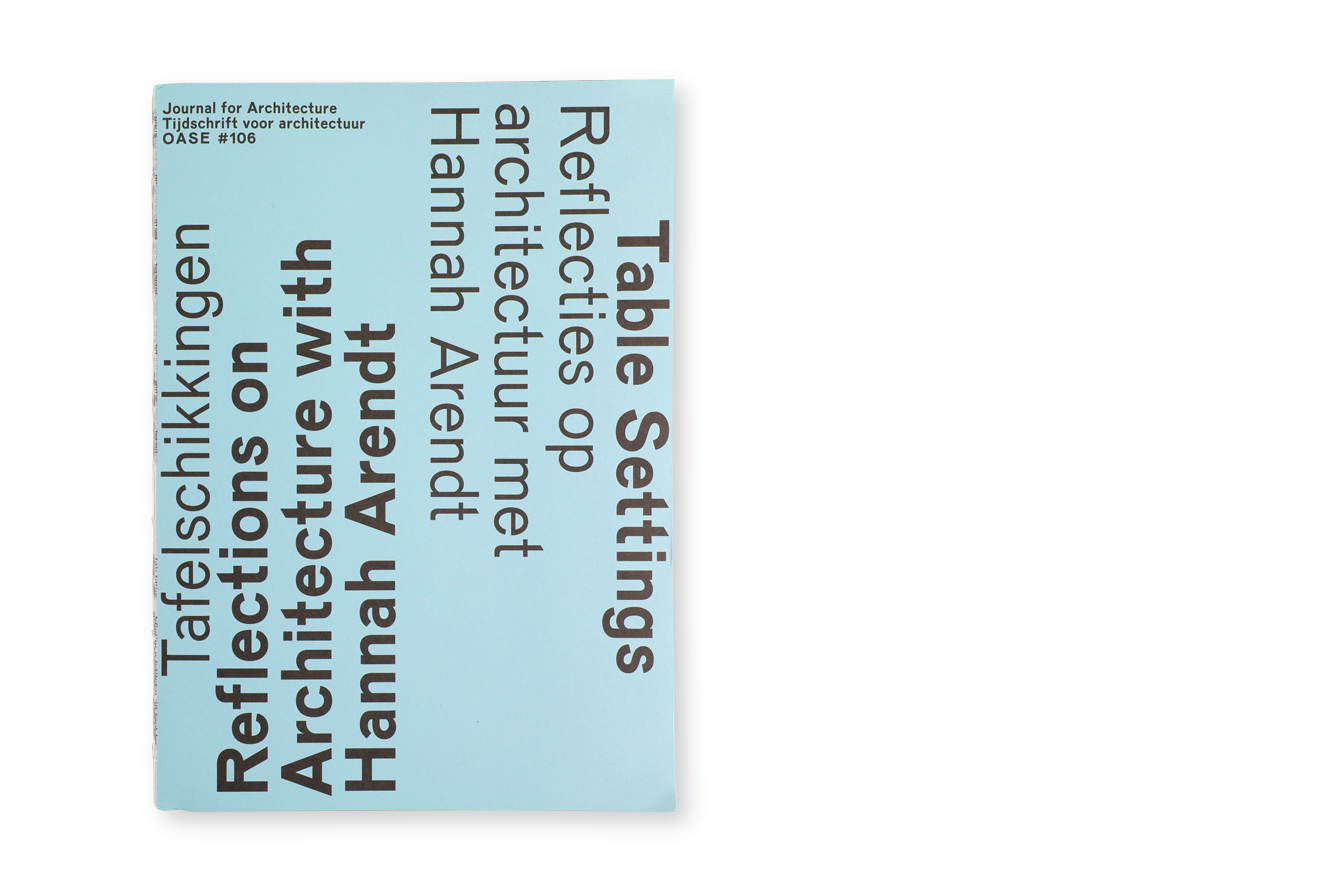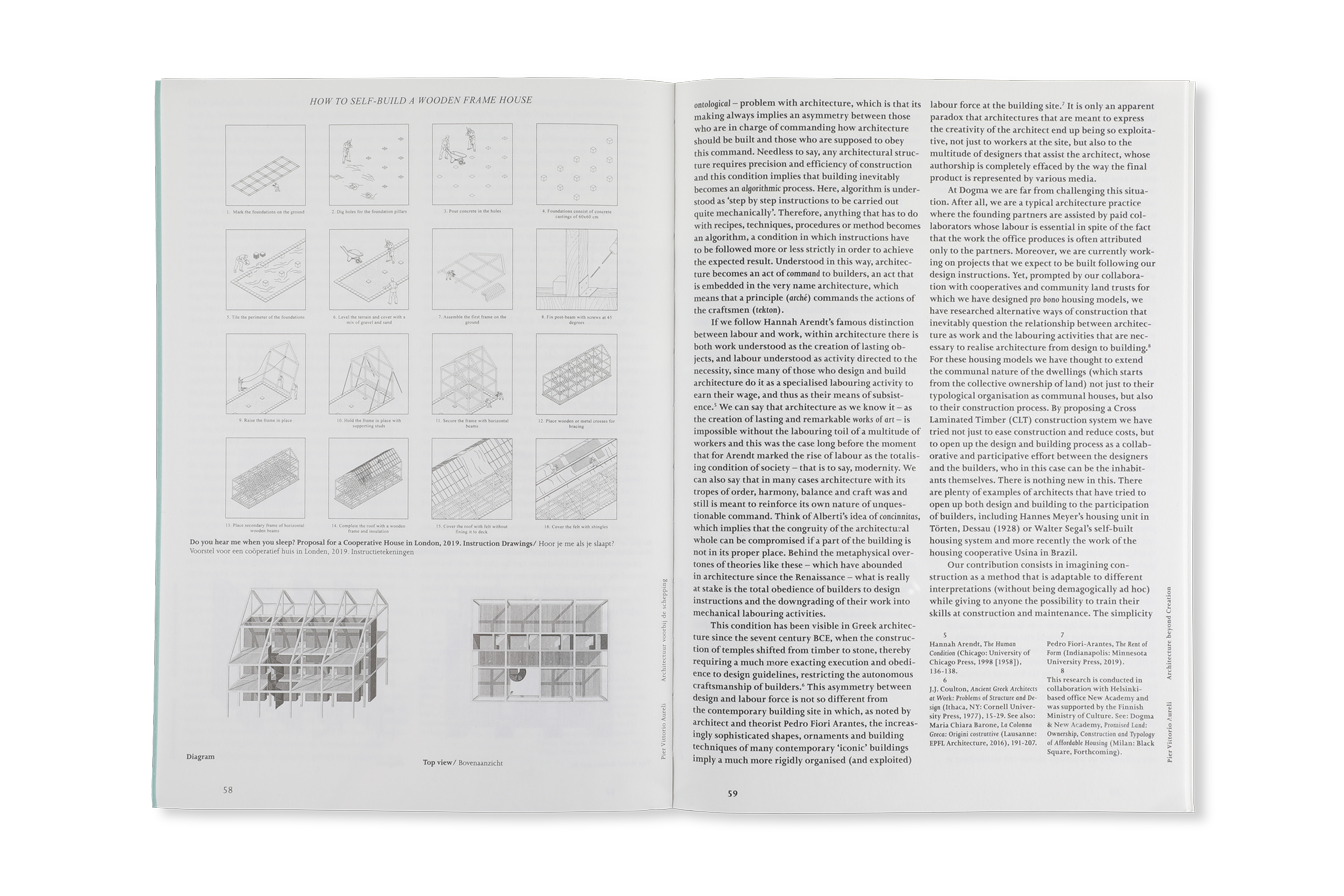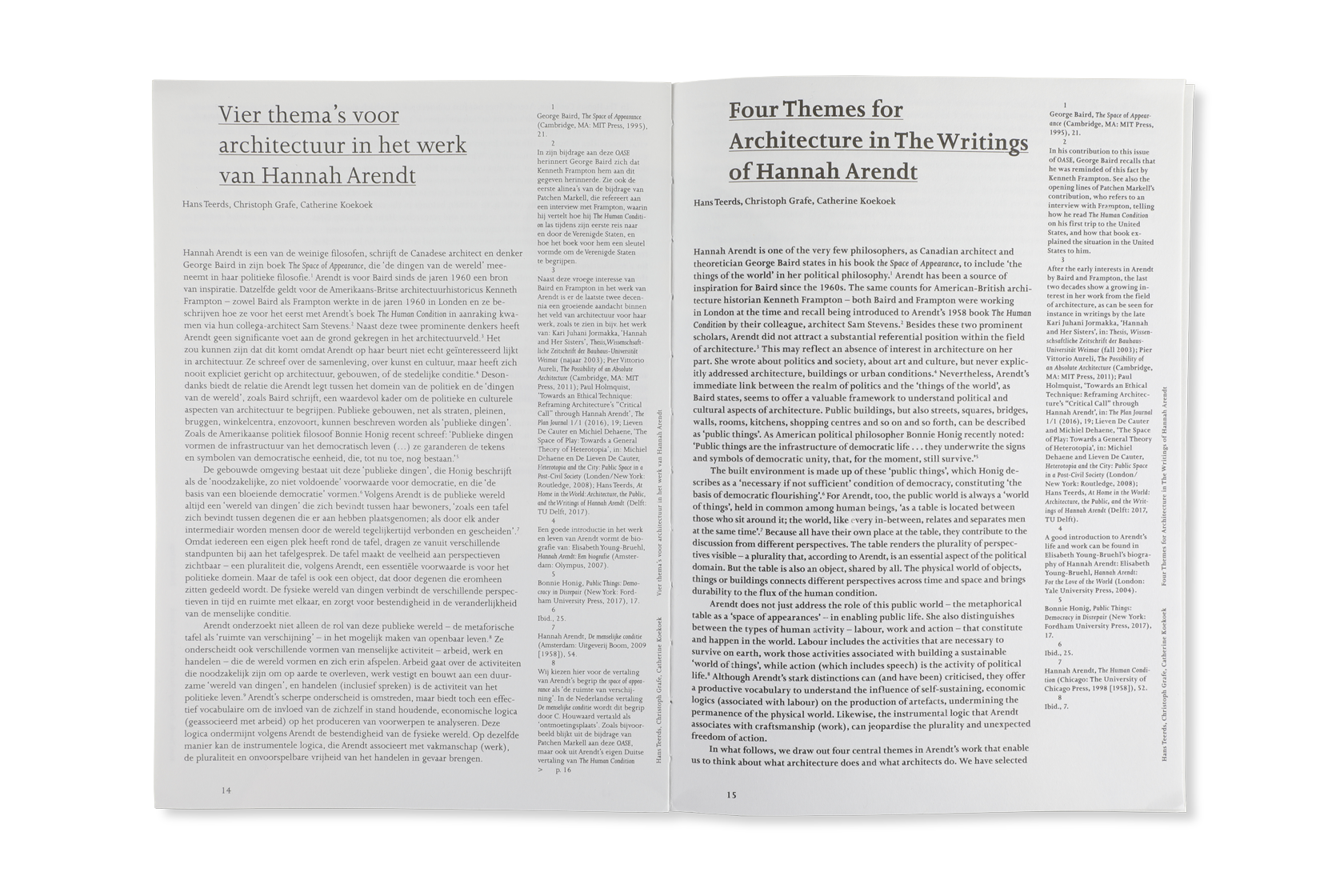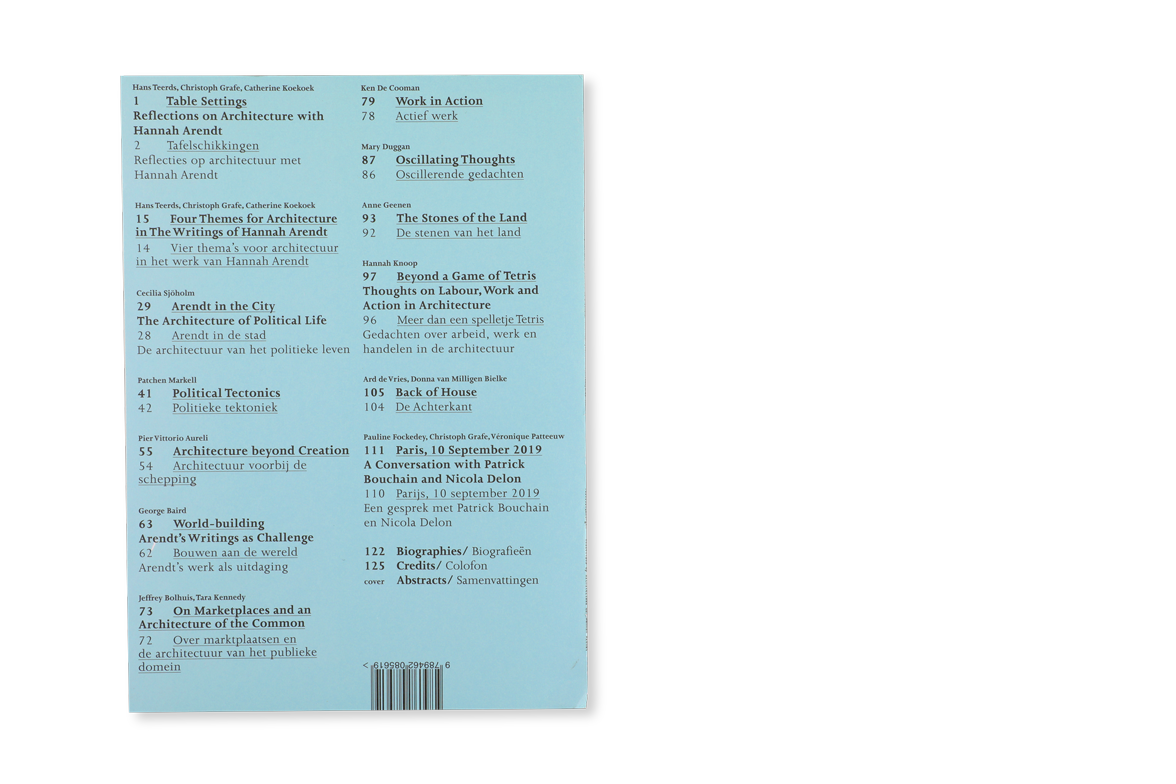OASE 106 – Table Settings. Reflections on Architecture with Hannah Arendt
Read online here.
The German-American philosopher Hannah Arendt (1906-1975) once stated that spatial thinking is ‘political’ thinking, as it is concerned about the world and its inhabitants. We certainly can understand spatial thinking here as architectural thinking: the ‘world’ for Arendt meant the ways in which we make the globe habitable for people: how we build houses and cities, infrastructures and other networks, and furnish spaces with tables, chairs, paintings and photographs. According to Arendt, this world-of-things was crucial for political life: it is this world that simultaneously connects people and separates them, just like a table organises the people (and the conversation) around it.
This OASE examines architecture – design, building, built environment – from this perspective. The issue opens with an introduction to Arendt’s political thinking, and how it is connected to the (production of) the world. Next, a variety of architects, including George Baird, Patrick Bouchain, Pier Vittorio Aureli, and Mary Duggan, will have the floor to examine their daily practice from Arendt’s perspective.
Contributions by Pier Vittorio Aureli (Dogma), Geoge Baird, Jeffrey Bolhuis (AP+E Office) & Tara Kennedy, Patrick Bouchain (Construire), Ken De Cooman (BC Architects), Nicola Delon (Encore Heureux), Mary Duggan (Mary Duggan Architects), Pauline Fockeday, Anne Geenen (Site Practice), Christoph Grafe, Catherine Koekoek, Hannah Knoop (Studioeurope), Patchen Markell, Véronique Patteeuw, Cecilia Sjöholm, Hans Teerds, Ard de Vries (Ard de Vries Architecten) and Donna van Milligen Bielke (Studio Donna van Milligen Bielke)




